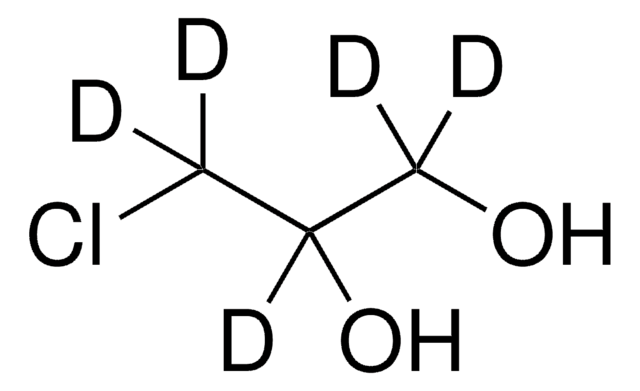394653
N,O-Bis(trimethylsilyl)trifluoroacetamide with trimethylchlorosilane
with 10% trimethylchlorosilane, for GC derivatization, ≥98.0%
Synonym(s):
BSTFA + TMCS
About This Item
Recommended Products
grade
for GC derivatization
assay
≥98.0%
98% (excluding TMCS)
quality
with 10% trimethylchlorosilane
contains
10% TMCS
reaction suitability
reagent type: derivatization reagent
reaction type: Silylations
refractive index
n20/D 1.384 (lit.)
bp
45-50 °C/14 mmHg (lit.)
density
0.961 g/mL at 25 °C
0.97 g/mL (lit.)
storage temp.
2-8°C
SMILES string
C[Si](C)(C)O\C(=N\[Si](C)(C)C)C(F)(F)F
InChI
1S/C8H18F3NOSi2/c1-14(2,3)12-7(8(9,10)11)13-15(4,5)6/h1-6H3/b12-7+
InChI key
XCOBLONWWXQEBS-KPKJPENVSA-N
Looking for similar products? Visit Product Comparison Guide
Other Notes
signalword
Danger
hcodes
Hazard Classifications
Acute Tox. 4 Oral - Eye Dam. 1 - Flam. Liq. 2 - Skin Corr. 1A
Storage Class
3 - Flammable liquids
wgk_germany
WGK 3
flash_point_f
15.8 °F - closed cup
flash_point_c
-9 °C - closed cup
ppe
Faceshields, Gloves, Goggles, type ABEK (EN14387) respirator filter
Certificates of Analysis (COA)
Search for Certificates of Analysis (COA) by entering the products Lot/Batch Number. Lot and Batch Numbers can be found on a product’s label following the words ‘Lot’ or ‘Batch’.
Already Own This Product?
Find documentation for the products that you have recently purchased in the Document Library.
Our team of scientists has experience in all areas of research including Life Science, Material Science, Chemical Synthesis, Chromatography, Analytical and many others.
Contact Technical Service







